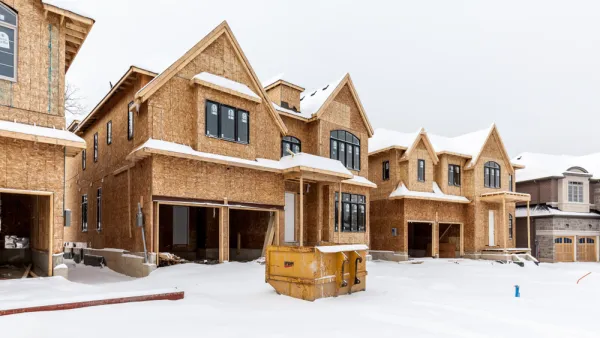While the decline may not be visible, total auto ownership peaked in 2008 according to a new report by Michael Sivak of the University of Michigan's Transportation Research Institute. He set out to determine the cause - was it the economic recession?
As an associate editor at The Atlantic, Jordan Weissmann has been following the reduction of driving in the U.S and written about the reduction in younger drivers. He wanted to know if "the U.S. is getting over car culture", or if the driving reduction was mainly a product of the economic downturn. He looked toward Sivak's findings (PDF) for an insight.
Sivak analyzed the period from 1984 through 2011. He examined the registration "of light-duty vehicles (cars, pickup trucks, SUVs, and vans) for each year from 1984 through 2011."
Its key take-away is that the number of cars per household actually began to decline pre-recession, after 2006. Same goes for cars per licensed driver and cars per person.
In fact, the accompanying graph shows it all, with the vehicle registration rate - per person, per licensed driver, and per household, peaking around 2006 - before the recession which is recognized as beginning in December, 2007 per U.S. Bureau of Labor Statistics (PDF).
Yet, Weissmann is not entirely sold, pointing to pre-recession economic factors, e.g. home values peaked in 2006 and suspects that influenced car ownership rates.
He concludes that "(t)he decline of car ownership might well turn out to be a long-term trend with cultural and demographic roots. But if so, the housing bust and recession still seem to have been the tipping point."
He may be partially correct - if you distinguish between absolute numbers and rate of ownership.
From Sivak's abstract (PDF): "...with the improving economy and the expected increase in the U.S. population, it is highly likely that (from a long-term perspective) the absolute number of vehicles has not yet peaked." However, if you believe Sivak, the rate of ownership peaked seven years ago.
FULL STORY: Has the U.S. Passed Peak Car?

National Parks Layoffs Will Cause Communities to Lose Billions
Thousands of essential park workers were laid off this week, just before the busy spring break season.

Retro-silient?: America’s First “Eco-burb,” The Woodlands Turns 50
A master-planned community north of Houston offers lessons on green infrastructure and resilient design, but falls short of its founder’s lofty affordability and walkability goals.

Delivering for America Plan Will Downgrade Mail Service in at Least 49.5 Percent of Zip Codes
Republican and Democrat lawmakers criticize the plan for its disproportionate negative impact on rural communities.

Test News Post 1
This is a summary

Test News Headline 46
Test for the image on the front page.

Balancing Bombs and Butterflies: How the National Guard Protects a Rare Species
The National Guard at Fort Indiantown Gap uses GIS technology and land management strategies to balance military training with conservation efforts, ensuring the survival of the rare eastern regal fritillary butterfly.
Urban Design for Planners 1: Software Tools
This six-course series explores essential urban design concepts using open source software and equips planners with the tools they need to participate fully in the urban design process.
Planning for Universal Design
Learn the tools for implementing Universal Design in planning regulations.
EMC Planning Group, Inc.
Planetizen
Planetizen
Mpact (formerly Rail~Volution)
Great Falls Development Authority, Inc.
HUDs Office of Policy Development and Research
NYU Wagner Graduate School of Public Service





























